Northern Lights Revealed
Santa Barbara Photographer Hunts for the Aurora Borealis
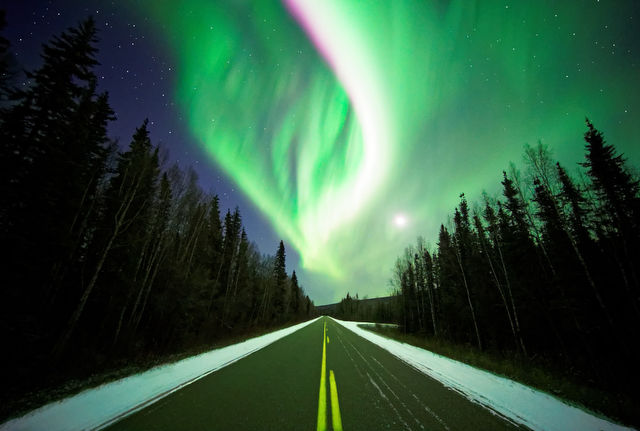
An accountant for Santa Barbara nonprofits by day, James Studarus is a lifelong outdoor enthusiast who found himself on a globe-trotting quest to experience the aurora borealis from Iceland to the Yukon in 2016. As this long, often dark year comes to a close, we hope you enjoy these wonderful glimpses of magical light during the holiday season.
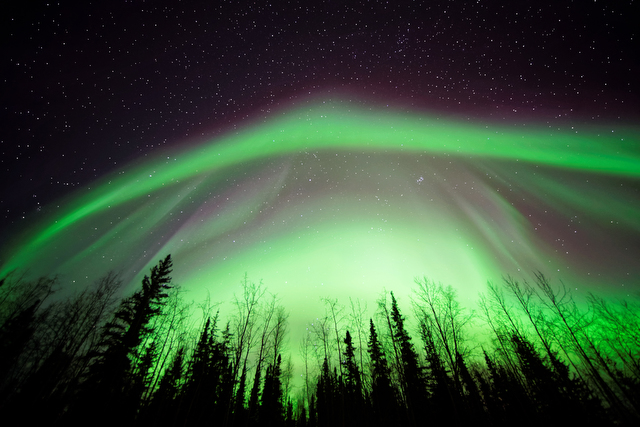
The giant peaks of Tombstone Territorial Park in the Yukon of far northern Canada are a magnificent sight. Their carved granite slopes rise sharply from the vibrant yellow and red shrubs of the rugged tundra, casting a spell both inviting and menacing.
But I didn’t go there for that.
Over the past year, I’ve become infatuated with the northern lights, those mysterious glowing illuminations in the sky scientifically known as the aurora borealis that intermittently appear at both ends of our earth. My fascination began this past February in Iceland, where my travel mate and I toured the island country in a frigid van. At the tail end of our trip, we were shocked and amazed by the skies above the Westfjords, wowed into complete elation as an incredibly strong aurora display decimated our sense of reality. It was like a cosmic magic trick that defied logic. I was hooked.
A month later, I found myself in Fairbanks, Alaska, bundled up on a dome road, high above empty canyons, catching an alien-looking aurora storm invade the last frontier again in complete disbelief. As an avid backpacker, I craved more than an easy roadside seat. I’ve trekked around the tallest peaks of South America, North America, and Asia but had never set up my tent beneath aurora skies. So in August, I endured three airplane flights and nearly 10 hours on the bus to get there and then embarked on an eight-day trek, hauling my food, clothing, and shelter into the wilderness.
I hoped it would be worth it.
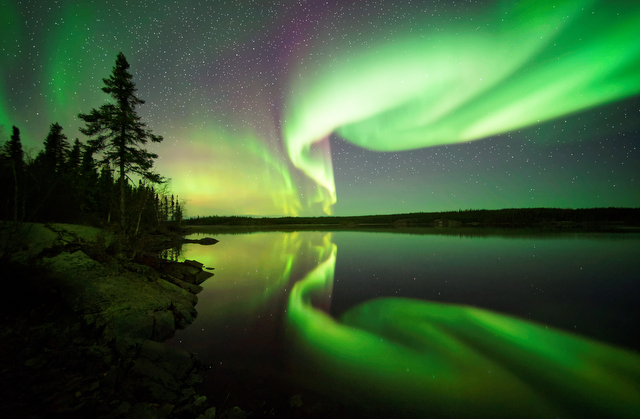
Sunshine to Snowy Skies
I am more accustomed to the sunny skies of Santa Barbara than the icy conditions of the far north. I’m a longtime California resident who graduated from UCSB as an environmental studies major. I played Ultimate Frisbee with the three-time national champion Black Tide and then followed that with three national championships and a world crown with the Santa Barbara Condors. Today, I work with environmental and social justice nonprofits in technical roles, helping them provide much-needed services to our community.
I greatly enjoy living on the South Coast but also love getting out to see the rest of our magnificent world. Recent years have included trips to Jordan, Venezuela, New Zealand, Peru, Nepal, and Guatemala until my wintertime experience in Iceland set me on a new course. Along the way, I’ve begun incorporating photography to document the dramatic landscapes I encounter. My skills and equipment have evolved from rudimentary to refined during the past six months or so, and I’ve learned how to use a tripod and long exposures to capture the aurora borealis at its best, with the stars visible in outer space behind.
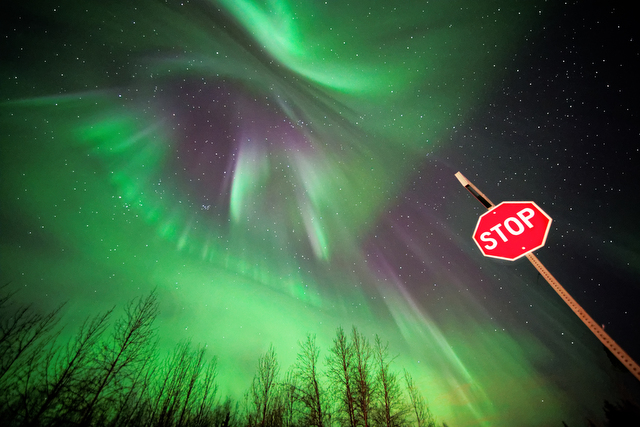
Tens of thousands of people have seen my photos on Instagram. When I started my account, the app auto-corrected by last name from Studarus to Stardust, so I decided to use @StardustImages as my handle. The name now seems very appropriate. Instagram has given me the opportunity to improve my photography while sharing beautiful natural images with the digital world. More than 300 people typically “heart” my photos, but I recently allowed OurPlanetDaily to post my tent-under-aurora shot for their 1.7 million followers, and nearly 30,000 people liked it, and another 10,000 did when ImagesofCanada did the same.
I recently launched StardustImages.org to sell my photographs and raise money for charitable organizations. I held the first gallery show of my life on December 1 at Bici Centro on East Haley Street, where we raised $1,000 to support bicycle causes in Santa Barbara. I also donated a photo to Sarah House for its holiday auction and am hoping to work with Santa Barbara Channelkeeper and the Wilderness Youth Project in 2017.
I’ve also learned a lot about the aurora borealis since February. In very basic terms, the northern lights are what we see when the Sun’s solar flares reach Earth and react with the magnetically charged North Pole and South Pole, where they are called the aurora australis. More precisely, the electrons of the solar flares soar into higher-energy orbits when they touch Earth’s atmosphere. When they shift to a lower orbit, they release particles of light, and these photons appear to the human eye as waves of pink, green, yellow, blue, violet, orange, and white.
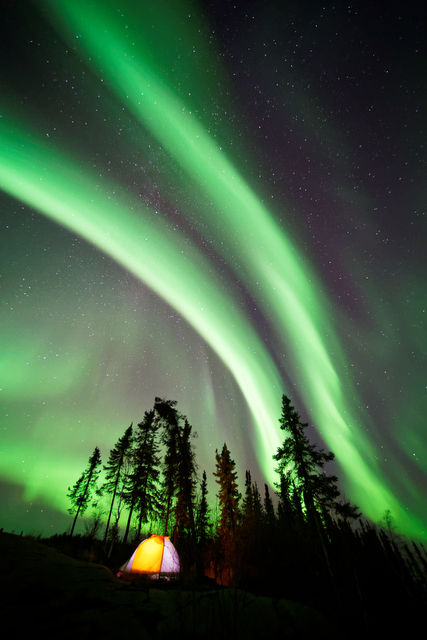
Since scientists can see when the Sun blasts out these flares, there is an aurora forecast called the Kp-index that predicts the strength of a given night’s show 27 days in advance. The index ranges from 0 to 9 (the higher the number, the stronger the display), and it is posted weekly on the website of the National Oceanic and Atmospheric Administration (NOAA). The weather, I’ve found, can be harder to predict, so searching for the northern lights is like looking for a seat in a divine theater — sometimes the universe is kind and lets you in, but sometimes you are in the wrong, cloudy venue.
Given this increasing knowledge of one of the world’s most captivating but little-understood phenomena, I’ve found myself frequently answering questions about the northern lights from curious individuals. On my last trip to Canada, for instance, I was amicably held at security while I explained the Kp-index forecast and “aurora oval” to an inquisitive border guard, who was very interested in traveling to see the lights himself.
In the northern hemisphere, the lights accumulate around a band, or aurora oval, that hovers near the Arctic Circle and looks like a halo on the top of our planet, running through Alaska, Canada’s northern territories, Iceland, Scandinavia, and Siberia. I’d been studying locations, weather, and timing since I returned from the Westfjords (where the Kp-index hit 7) and was excited as the calendar crept later into summer toward fall, meaning shorter days and longer, darker nights.
When I found out that this halo passes directly over the distant wilderness of Tombstone Territorial Park, I realized that there aren’t many places where you can see the aurora framed by gigantic peaks and pristine lakes. In late August, I noticed that there was a strong Kp-index event on the way with seemingly clear weather for two weeks straight. I started packing.
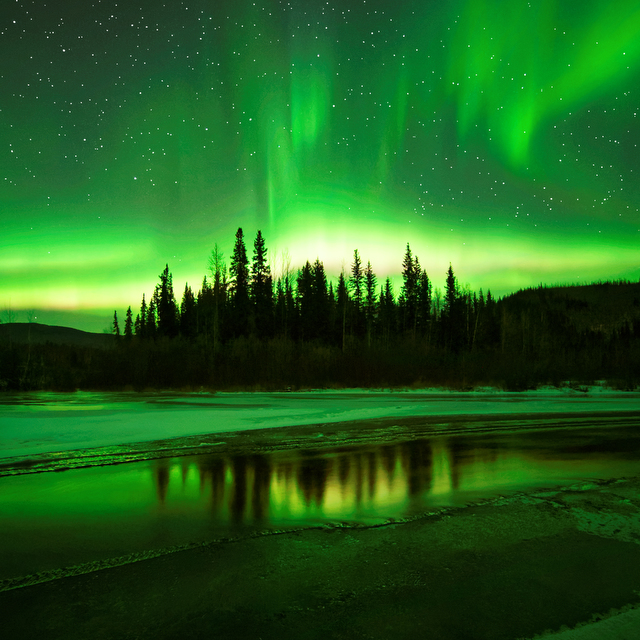
Triumph at Tombstone
After flights to San Francisco, Vancouver, and Whitehorse, the capital of the Yukon Territory (where a Dutch couple handed me their second-hand bear spray), I rode a seven-hour shuttle to Dawson City. The former gold rush town is now home to a casino, a dance troupe, and a frostbitten-toe cocktail — but don’t eat that real human toe in your drink, because it’s punishable by law.
The next day’s two-hour shuttle dropped me onto Tombstone’s Grizzly Lake trailhead, where my eight-day trek began.
The first day’s hike was much more strenuous than anticipated, hugging a ridgeline for seven hours, but the scenery made up for it, especially the view of Mount Monolith’s finger peak. As the weight of my pack dug into my waist and strained my hips, I began to question why I was doing this. But I eventually saw Grizzly Lake, my home for the next two nights, and was soon setting up camp and tucking my food into the bear storage container.
There, I met a Tasmanian gentleman whose overzealous appetite had decimated his weeks’ worth of food, so he was living on wild blueberries and the generosity of others. We talked about our travels and his homeland, which is on my radar for a visit. I laid down after a sunset dinner for a quick rest, hoping that the skies would come alive above the lake.
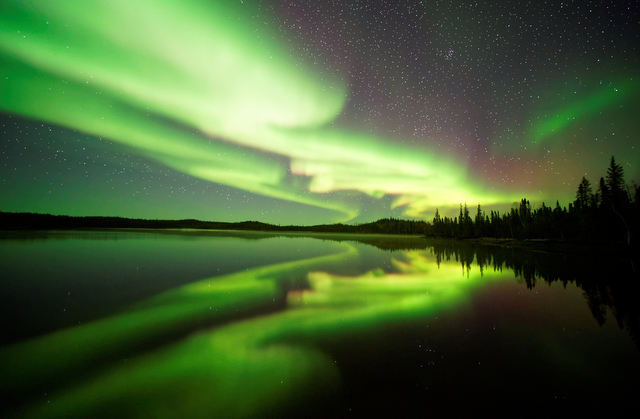
Darkness descended, and the aurora exploded in a strong green display that reminded me of giant lightsabers flashing over the craggy spires and rippling lake. As my camera captured the show, my excitement was obvious, as the lights elicit a vocal joy. Hollering alongside me were Germans, Australians, Norwegians, and other Americans, many of whom had never experienced the northern lights before. The amazement is contagious.
That first night made all the planning and travel worth it. The week continued with incredible scenery, tough hiking, and much more aurora, as I got the golden ticket on all seven nights, with five of them being remarkable displays. The trip culminated at Divide Lake, where the unrelenting lights danced all over the peaks above the motionless water, as a group of Scandinavians, Canadians, and Irish sang birthday songs in Norwegian.
When people ask me how my trip was, I tell them that it was life-changing. Experiencing extreme beauty is nourishing for the spirit and healing for me. This was a transformative adventure. The celestial performances made me feel more alive, settled, present, and motivated. Since Tombstone, I’ve taken my camera to Yellowknife in Canada’s Northwest Territories (another success) and again to Fairbanks, where I was mostly slapped around by the harsh winter weather of the Alaskan interior. Next year, I plan to hit Norway and Finland in either February or March, depending on when the aurora storm looks strongest. In the meantime, I’ll keep basking in my newfound glow.



